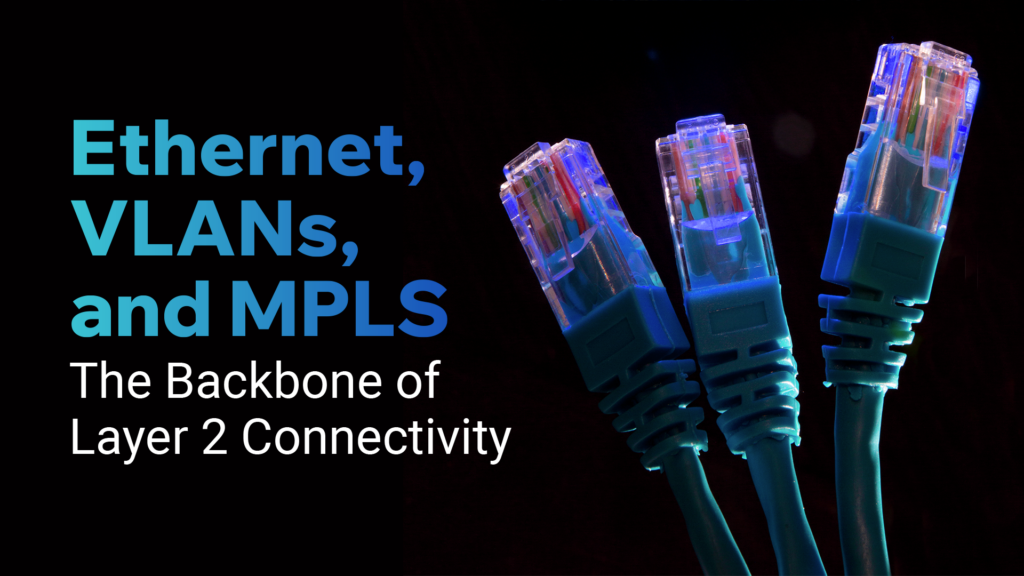
What is Ethernet?
Ethernet is the cornerstone of most networking solutions. It defines protocols and standards for physically connecting devices in a local area network (LAN). It ensures data is transmitted efficiently using MAC addresses for unique device identification.
Advantages of Ethernet in Networking
- Simplicity and Scalability: Easy to deploy and scale for businesses of any size.
- High-Speed Communication: Supports speeds ranging from 10 Mbps to 400 Gbps.
- Cost-Effectiveness: Widely adopted with affordable hardware solutions.
Common Use Cases for Ethernet
- Office LANs
- Data centers for server interconnectivity
- Industrial applications requiring real-time data transmission
Understanding VLANs
Virtual Local Area Networks (VLANs) add a layer of flexibility to Ethernet by logically segmenting networks. VLANs enable administrators to partition a single physical network into multiple virtual ones.
Why Use VLANs?
- Enhanced Security: By isolating sensitive data on specific VLANs, organizations can mitigate risks.
- Improved Traffic Management: VLANs reduce congestion by segregating traffic logically.
- Ease of Administration: Simplifies management of user groups and departments.
Examples of VLAN Implementation
- Separating voice, video, and data traffic in a corporate network.
- Creating isolated networks for guests in a public Wi-Fi setup.
- Isolating traffic between departments in large organizations.
The Role of MPLS in Connectivity
Multiprotocol Label Switching (MPLS) operates across layers 2 and 3, offering a hybrid approach. It uses labels rather than IP addresses to route data, significantly improving speed and efficiency.
Benefits of MPLS
- Optimized Routing: Reduces latency by enabling faster packet forwarding.
- Scalability: Suitable for large, complex networks with extensive traffic demands.
- Traffic Engineering: Ensures better bandwidth utilization and performance predictability.
Real-World Applications of MPLS
- Connecting branch offices to central data centers.
- Backbone infrastructure for Internet Service Providers (ISPs).
- Supporting real-time applications like VoIP and video conferencing.
How Ethernet, VLANs, and MPLS Work Together
The seamless interaction between Ethernet, VLANs, and MPLS is what makes them indispensable for modern Layer 2 networks.
Integration of Ethernet and VLANs
VLAN tagging (IEEE 802.1Q) enables Ethernet frames to carry VLAN information. This allows multiple VLANs to coexist on a single Ethernet link while maintaining isolation.
Role of MPLS in Enhancing Ethernet and VLAN Connectivity
MPLS complements Ethernet and VLANs by routing traffic more efficiently across wide areas. By combining these technologies, organizations achieve high performance, scalability, and reliability in both local and wide-area networks.
Challenges in Managing Layer 2 Connectivity
While these technologies offer numerous advantages, they are not without challenges:
- Complex Configuration: Requires expertise for proper setup and maintenance.
- Scalability Concerns: As networks grow, VLAN and Ethernet setups can become unwieldy.
- Cost: MPLS solutions may involve significant investment.
Best Practices for Ethernet, VLANs, and MPLS Deployment
- Plan Your VLAN Strategy: Ensure logical segmentation aligns with organizational needs.
- Leverage MPLS for WAN Efficiency: Use MPLS to optimize wide-area network routing.
- Adopt Modern Ethernet Standards: Utilize Gigabit Ethernet or higher to future-proof your network.
FAQs
How does Ethernet ensure reliable communication?
Ethernet uses collision detection, error-checking mechanisms, and standardized protocols to maintain robust data transfer within a network.
What are the main benefits of VLANs?
VLANs enhance security, improve traffic management, and simplify network administration by logically segregating networks.
Can MPLS replace Ethernet?
No, MPLS and Ethernet serve different purposes. Ethernet handles physical connections, while MPLS optimizes data routing across wide areas.
How do VLANs improve network performance?
By isolating traffic, VLANs prevent unnecessary data from traversing the entire network, reducing congestion and improving speed.
Is MPLS still relevant with SD-WAN technologies emerging?
Yes, MPLS remains crucial for environments requiring predictable performance, especially for real-time applications.
What factors influence the choice between MPLS and other technologies?
Cost, scalability, application demands, and organizational goals play significant roles in determining the choice.
Conclusion
Ethernet, VLANs, and MPLS are the unsung heroes of Layer 2 connectivity, each playing a critical role in modern networking. Together, they enable secure, scalable, and high-performance networks that cater to the dynamic needs of today’s digital landscape. By understanding their synergy, organizations can build robust infrastructure, ensuring seamless connectivity and future-ready performance.



